6,000 liters of liquid hydrogen
an hour produced by only 3 operators
While hydrogen fuel has garnered attention as one of many new energy sources in recent years, when the H-IIA/B Launch Vehicles–liquid fuel rockets at the core of Japan’s rocket program–soar into space, they consume enormous amounts of liquid hydrogen fuel that uses liquid oxygen as an oxidizer.
Iwatani Corporation has been involved in the production of liquid hydrogen for over 30 years. The liquid hydrogen the company produces in the city of Sakai is transported on land and sea to Tanegashima.
In 1930 Iwatani Corporation got started selling oxygen, welding rods and carbide in Osaka. The company began working with propane gas after World War II, thereafter expanding its gas business. Iwatani now works with industrial gas–primarily liquefied propane gas (LPG)–for use in the energy sector as well as in industry, medicine and more. The company also does business in other gas-related fields as well as materials. Since 1975, Iwatani has been providing all of its liquid hydrogen for use as rocket fuel in the aerospace sector.
Hydro Edge, a joint venture involving Kansai Electric Power Company (KEPCO) and other investors, is an Iwatani group company that makes its liquid hydrogen. The company has the largest liquid hydrogen plant in Sakai, Osaka Prefecture, which produces 6,000 liters of liquid hydrogen an hour.
Liquefied natural gas (LNG) is one of the ingredients used to make liquid hydrogen. The Hydro Edge plant’s location adjacent to KEPCO’s LNG import base keeps down the cost of transporting the ingredient. The company also tries to save energy when making super-cold liquid hydrogen by using low-temperature LNG.
Although the plant, with an area of around 32,000 square meters,2operates 24 hours a day, most production is automated, requiring only four shifts of three operators each.
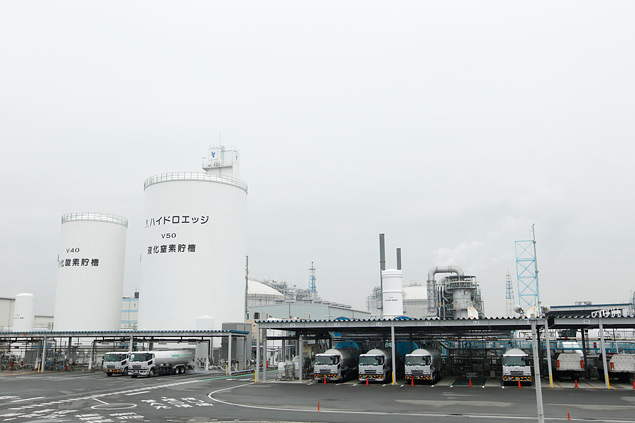
Hydro Edge’s liquid hydrogen plant in Sakai, Osaka Prefecture can produce 6,000 liters of liquid hydrogen an hour.
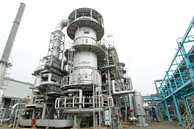
A reformer that produces hydrogen from liquefied natural gas (LNG).
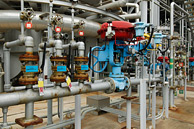
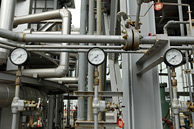

Pressure swing adsorption (PSA) equipment applies high pressure to separate carbon dioxide and extracts only the hydrogen.
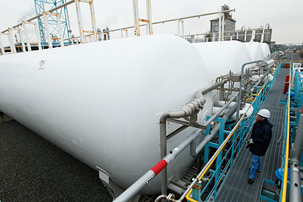
A liquid hydrogen storage tank. The plant has four 300-kl tanks in order to provide a stable supply.
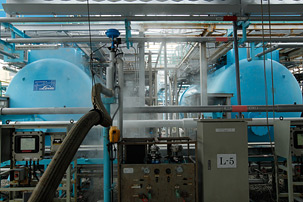
Liquefiers that turn hydrogen into a liquid use the energy derived from varying levels of heat produced by liquid nitrogen and by compressing/expanding hydrogen.
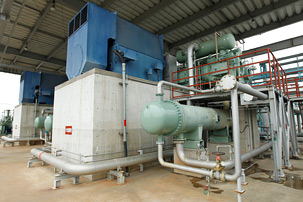
Hydrogen circulation compressors compress hydrogen that is then liquefied in the liquefiers.
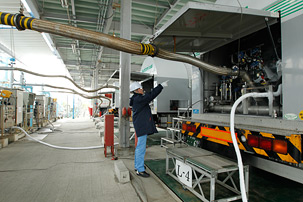
Liquid hydrogen being pumped into a tanker truck. One truck can carry up to 1,470 kg of liquid hydrogen.

Liquid hydrogen is also pumped into tanks for later transport. Hydro Edge has tanks of various sizes.
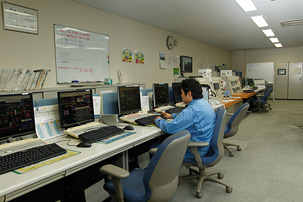
The control room is run by only three operators.
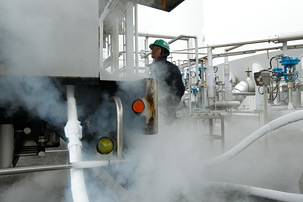
Hydro Edge also produces liquid oxygen, liquid nitrogen and more. This photo shows liquid nitrogen being pumped into a tanker truck.
IWATANI CORPORATION
INTERVIEW
インタビュー
Liquid hydrogen's applications began in space.
Private-sector demand is growing rapidly.
IWATANI CORPORATION
Industrial Gases and Welding Division, Hydrogen Gas Department Director
Yasuhisa Ueda
